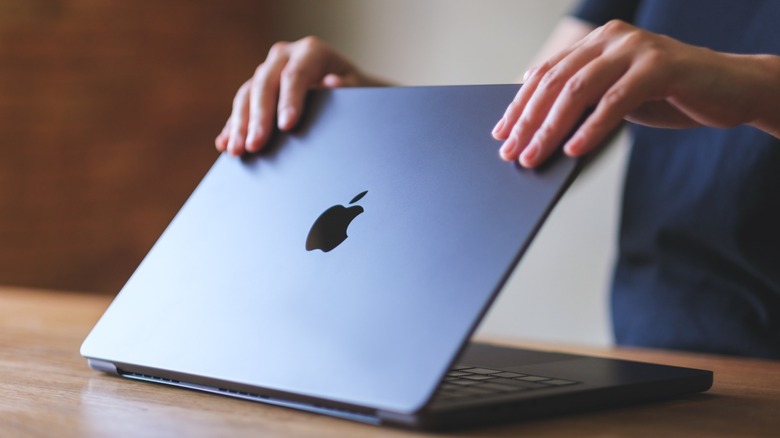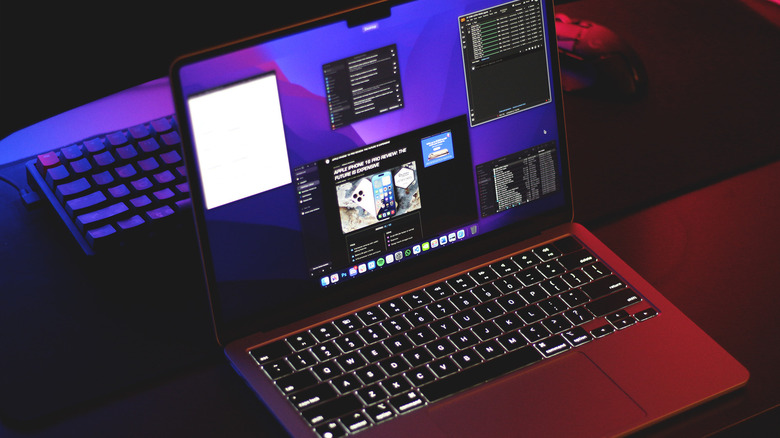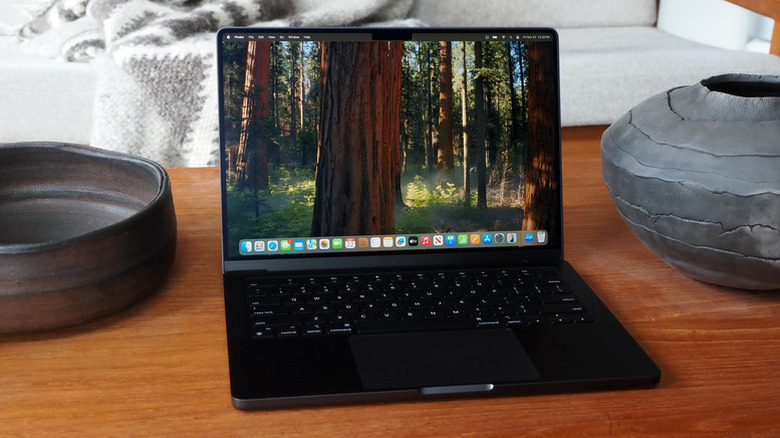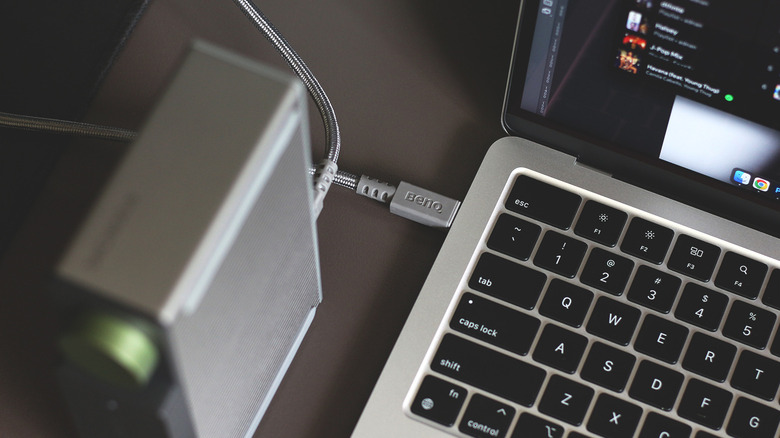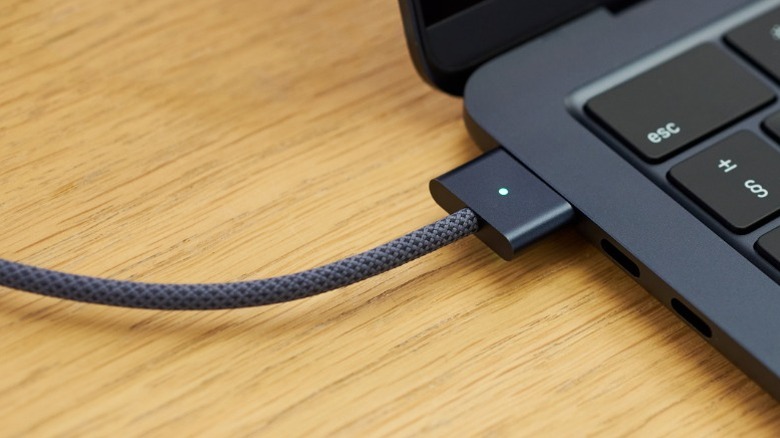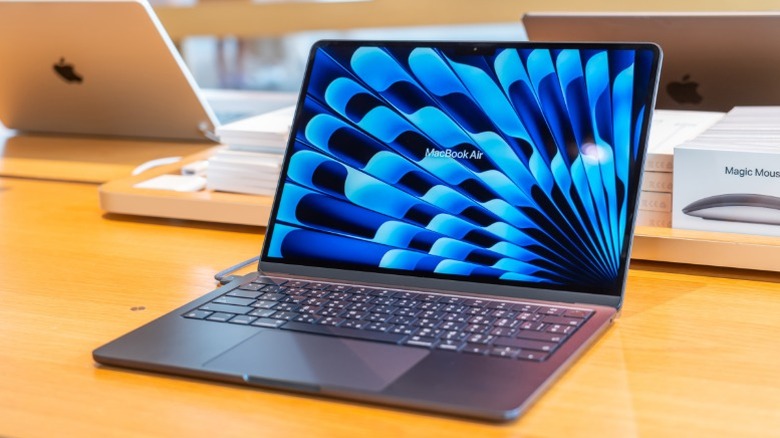MacBook Air Vs. MacBook Pro: Which Is Better For Your Laptop Needs?
The MacBook has always been iconic, but Apple’s transition to its in-house M-series of chipsets has solidified its position as a leader in the market for thin and light laptops. Regardless of which MacBook you decide to pick up from the past five years, you are sure to get your hands on a premium-feeling laptop that packs in remarkably good performance, all the while lasting exceptionally long.
Currently, Apple’s lineup consists of the 13 and 15-inch MacBook Air and the 14 and 16-inch MacBook Pro. Apple spaces out upgrades for these models, which is why the MacBook Pro is currently based on the latest M4 silicon, while the MacBook Air models that were released in March 2024 run on the M3 chips. You will also notice higher-end variants of the M4 chip when you shop for a Pro model.
It sounds obvious enough that the MacBook Pro can deliver more performance and is better suited for heavy lifting. However, there are other key differences between the Air and Pro models, beyond just performance gains. If you’ve been looking to switch to Mac, it’s natural to be torn between the relatively affordable MacBook Air or the expensive yet powerful MacBook Pro. From variations in display technology to different I/O options, here is everything you need to know about the Air and Pro models of the MacBook — and find out which one matches your needs the best.
Performance and upgrade options
If you’re switching from an age-old Windows laptop, or one of the Intel Macs, you will notice just how quick and efficient the new MacBooks are — irrespective of which model you’ve bought. The base models of both the MacBook Air and Pro share the same chip — though depending on the time of the year, you might find a newer M-series processor on the MacBook Pro. Differences start to pile up when you look at the upgrade options.
All MacBook Air models only ship with the base variant chips, with the M3 version offering an 8-core CPU and GPU. With a bump in storage capacity, the GPU gets a complimentary upgrade to 10-cores as well. On the other hand, the latest MacBook Pro laptops feature higher-end versions of the chip, including the M4 Pro and M4 Max. These offer a higher number of CPU and GPU cores compared to the MacBook Air — allowing for more headroom to handle intensive tasks such as video editing or 3D modelling.
MacBooks use unified memory which is shared between various components like the CPU and GPU. You can pick a maximum of 24 GB of memory for the MacBook Air, while a MacBook Pro with the M4 Max chip can be configured with up to 128 GB of RAM. Similarly, the top-end MacBook Pro variant can be decked out with up to 8 TB of SSD storage, whereas you have to make do with a maximum of 2 TB on the Air.
Perks of Mini-LED
One of the first big things you’ll notice between the two laptops is the display. Not only do they come in different sizes, but also pack in different technologies. The 14.2-inch or 16.2-inch MacBook Pro features the Liquid Retina XDR display, which is Apple’s fancy way of marketing Mini-LED technology. The MacBook Pro’s display is brighter at 1,000 nits (or up to 1,600 nits of peak brightness at HDR), and faster at 120Hz. By comparison, the MacBook Air’s 60Hz display can seem sluggish — but in the real world, both screens are bright and pixel-dense.
Though gaming is possible on the MacBook Pro, you’ll more realistically be noticing the 120Hz adaptive refresh rate in action while scrolling through web pages or editing high frame rate videos. Higher brightness also means better visibility outdoors on the MacBook Pro — especially when paired with the optional $150 nano-texture display, which reduces reflections. Mini-LED technology brings improved contrast, better HDR performance, and higher power efficiency. Side by side, the display on the MacBook Pro is closer to an OLED panel, thanks to deeper blacks and brighter whites.
The MacBook Air comes in two sizes of 13.6-inch and 15.3-inch panels, which can emit up to 500 nits of brightness. Apart from the differences in brightness and refresh rates, you will also notice the ever so slightly slimmer bezels on the MacBook Pro.
Design and ports
Design-wise, the MacBook Air and MacBook Pro have more in common than they have differences. Both laptops feature a boxy design on the outside, and house a notched display, large trackpad, and the iconic Touch ID fingerprint scanner for quick unlocks. Besides the brighter and faster screen that you’re sure to notice on the MacBook Pro, you are also likely to feel its heavier build at 4.7 pounds for the 16-inch variant. It is also thicker at 0.66 inches, while being slightly bigger in every dimension.
Like its name suggests, the MacBook Air is more portable at 3.3 pounds for the similarly sized 15-inch model, and even lighter at 2.7 pounds for the 13-inch variant. It’s also noticeably thinner at 0.45 inches, thanks to the lack and need of active cooling and a smaller battery — more on that later. If portability is what you’re looking for, then the MacBook Air is the obvious buy. However, when you factor in the gains in performance and battery life, the pound-and-a-half difference looks like an easy bridge to cross.
Port selection is another aspect that can sway your purchase decision. The MacBook Air only comes with two USB-C ports — which makes surviving without a docking station for your laptop next to impossible. The thicker MacBook Pro accommodates an extra USB-C port, an SD card slot, and an HDMI port. Fortunately, both machines come with the MagSafe charging port and a headphone jack.
Charging and efficiency
The slight heft of the MacBook Pro is a trade-off worth making when you consider the noticeable bump in battery performance that it brings. The new 16-inch MacBook Pro sports a 100-watt-hour battery, which is considerably higher than the 66.5-watt-hour battery found in the 15-inch MacBook Air. Paired with the M4 Pro chip, Apple claims the MacBook Pro delivers up to 24 hours worth of battery life while streaming videos — compared to 18 hours on the Air.
In real-world use, with high brightness and a bunch of apps running in the background, you can expect both machines to last hours on end — but the physically larger capacity on the MacBook Pro is sure to win the endurance race. Part of what makes it better with battery efficiency is the aforementioned Mini-LED panel, which theoretically draws less power than the regular LCD retina panel on the MacBook Air.
The MacBook Pro models also charge at higher speeds — up to 96W for the M4 chips and 140W for the M4 Pro and M4 Max variants. The M3 MacBook Air isn’t too far behind with its charging speed of up to 70W, though. Given the difference in battery size, the charging times are actually closer — with Apple claiming up to 50% power in 30 minutes on both models when charged using the right adapters.
Air or Pro: Picking the right choice
The laptop that will be a better buy will ultimately depend on your needs. If you mostly deal with work that requires the use of professional apps like video editing or designing tools, then you will definitely benefit from the higher-end variants of the M4 chip that are found in the MacBook Pro. You also get higher RAM and storage capacities, which can come in handy for multitasking and while working on bigger projects.
Conversely, those who need a laptop for more casual use or schoolwork will appreciate the lighter and portable MacBook Air. This is not to say that the Air cannot handle some heavy lifting — even the entry-level MacBook Air M3 we reviewed handled multitasking and a little bit of gaming gracefully. The Air also comes in two extra colors — Starlight and Space Gray, while the Pro models only ship in Space Black or Silver.
The 13-inch M3 MacBook Air starts at $1,099 and comes with 16 GB of RAM and 256 GB of storage. Apple also sells the M2 Air for $999. In comparison, the cheapest M4 MacBook Pro you can buy retails at $1,599, but comes with 512 GB of internal storage space alongside 16 GB of RAM. For some, the upgrades in display, performance, and I/O options might be compelling enough to pay the premium — while others that appreciate the more accessible price point may find the MacBook Air to be the perfect buy.
Source: http://www.slashgear.com/1782625/macbook-air-vs-pro-which-better-laptop-what-differences/
 techandtab
techandtab